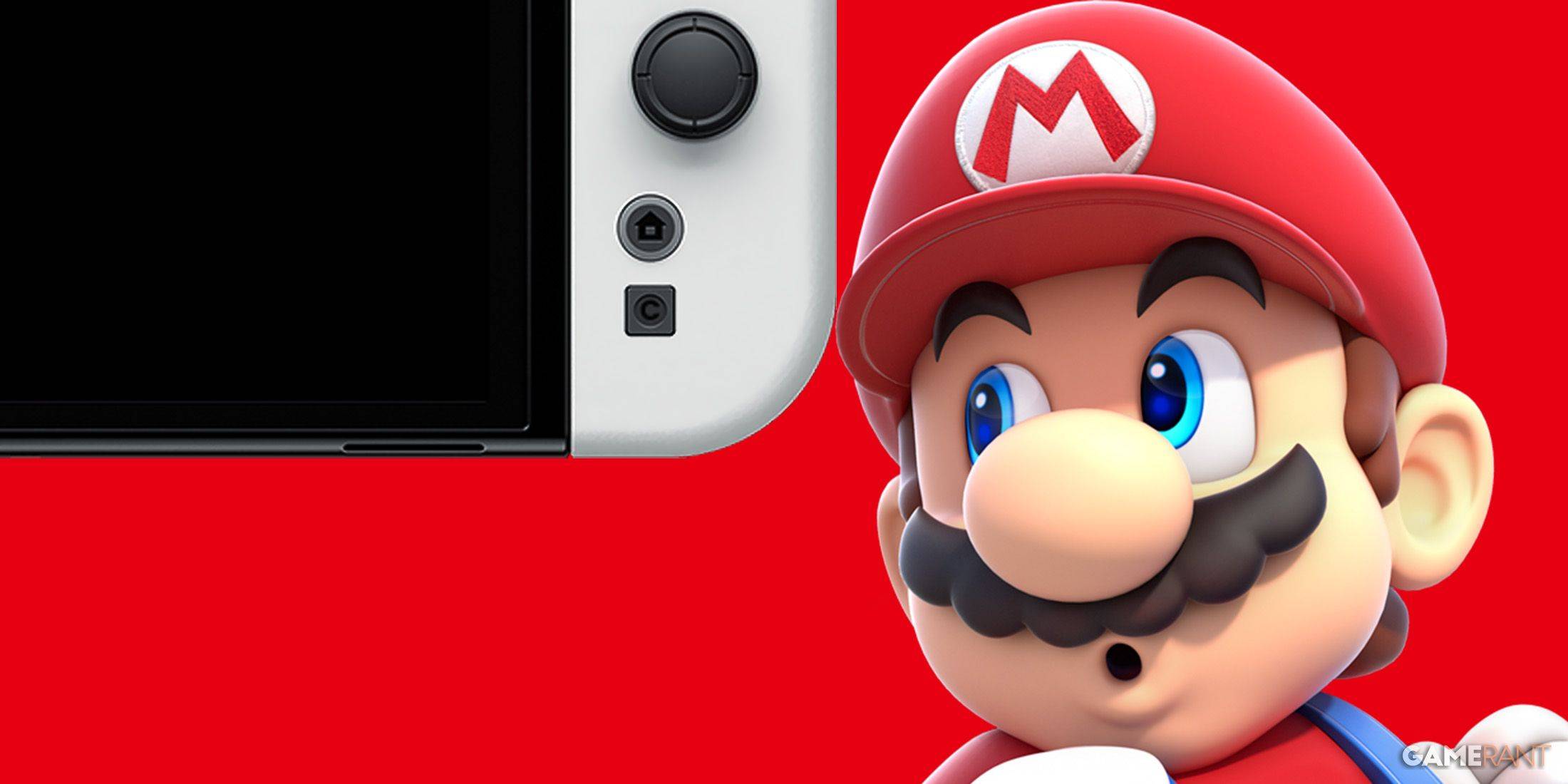Steamforged Games has brought several popular video game franchises to the tabletop, including Monster Hunter, Devil May Cry, Sea of Thieves, Gears of War, and the upcoming Elden Ring adaptation. This article focuses on their Resident Evil board game trilogy: Resident Evil, Resident Evil 2, and Resident Evil 3.
Released in 2019, 2021, and 2023 respectively, these games share similar mechanics. 1-4 players navigate perilous environments – dark corridors, burning streets, and sinister labs – recreating the stories of the respective video games. Highly detailed miniatures represent both the terrifying creatures and the heroic survivors.
Featured Games & Expansions:
 ### Resident Evil: The Board Game
### Resident Evil: The Board Game
1See it at Amazon ### Resident Evil: The Bleak Outpost
### Resident Evil: The Bleak Outpost
0See it at Amazon ### Resident Evil 2: The Board Game
### Resident Evil 2: The Board Game
0See it at Amazon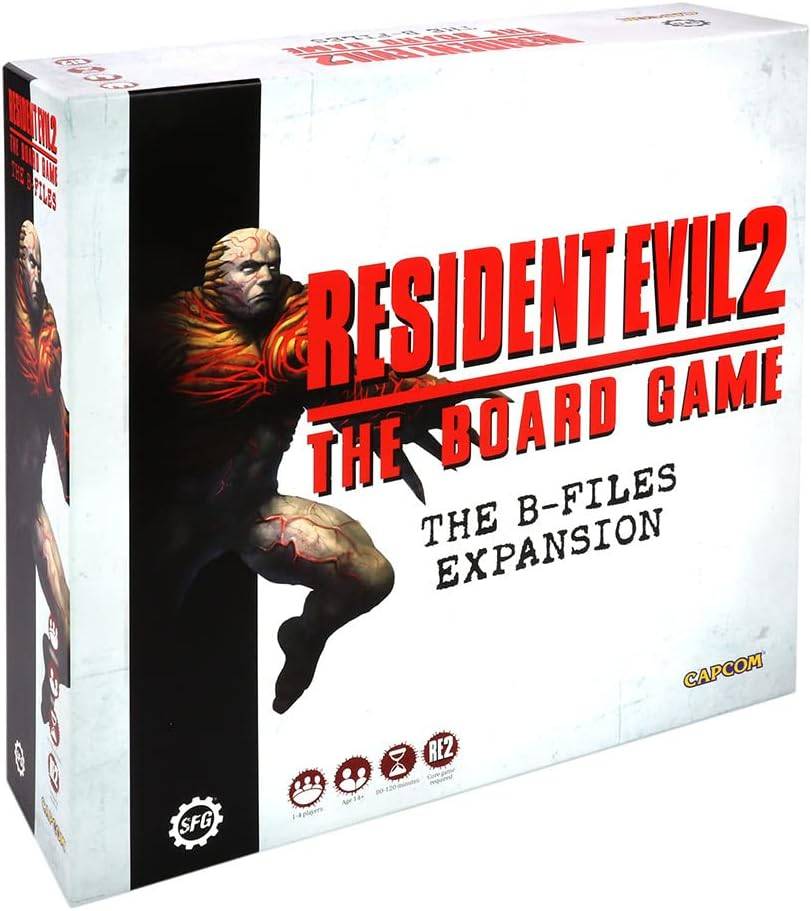 ### Resident Evil 2 The Board Game: B-Files Expansion
### Resident Evil 2 The Board Game: B-Files Expansion
0See it at Amazon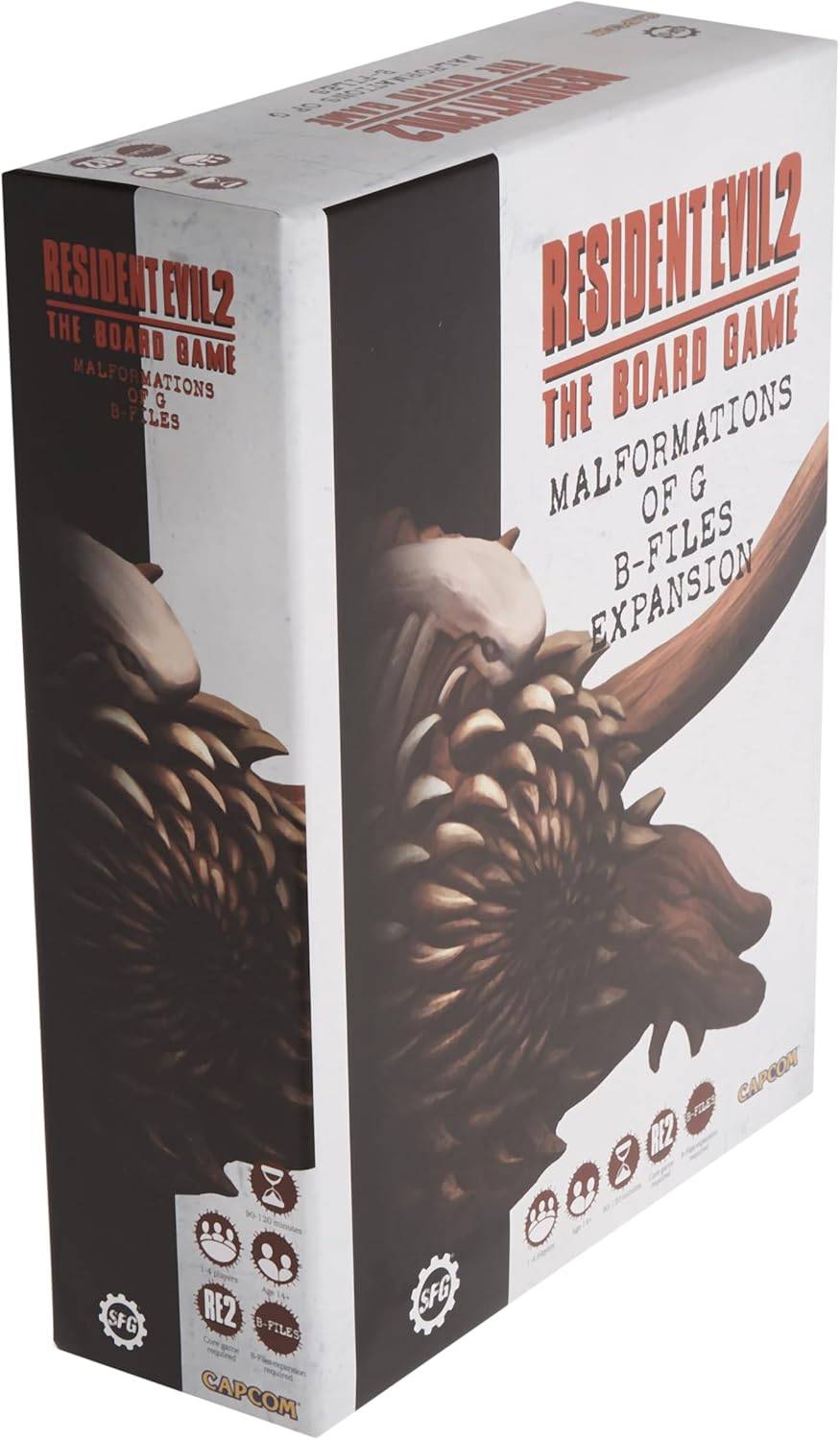 ### Resident Evil 2: The Board Game - Malformations of G B-Files Expansion
### Resident Evil 2: The Board Game - Malformations of G B-Files Expansion
0See it at Amazon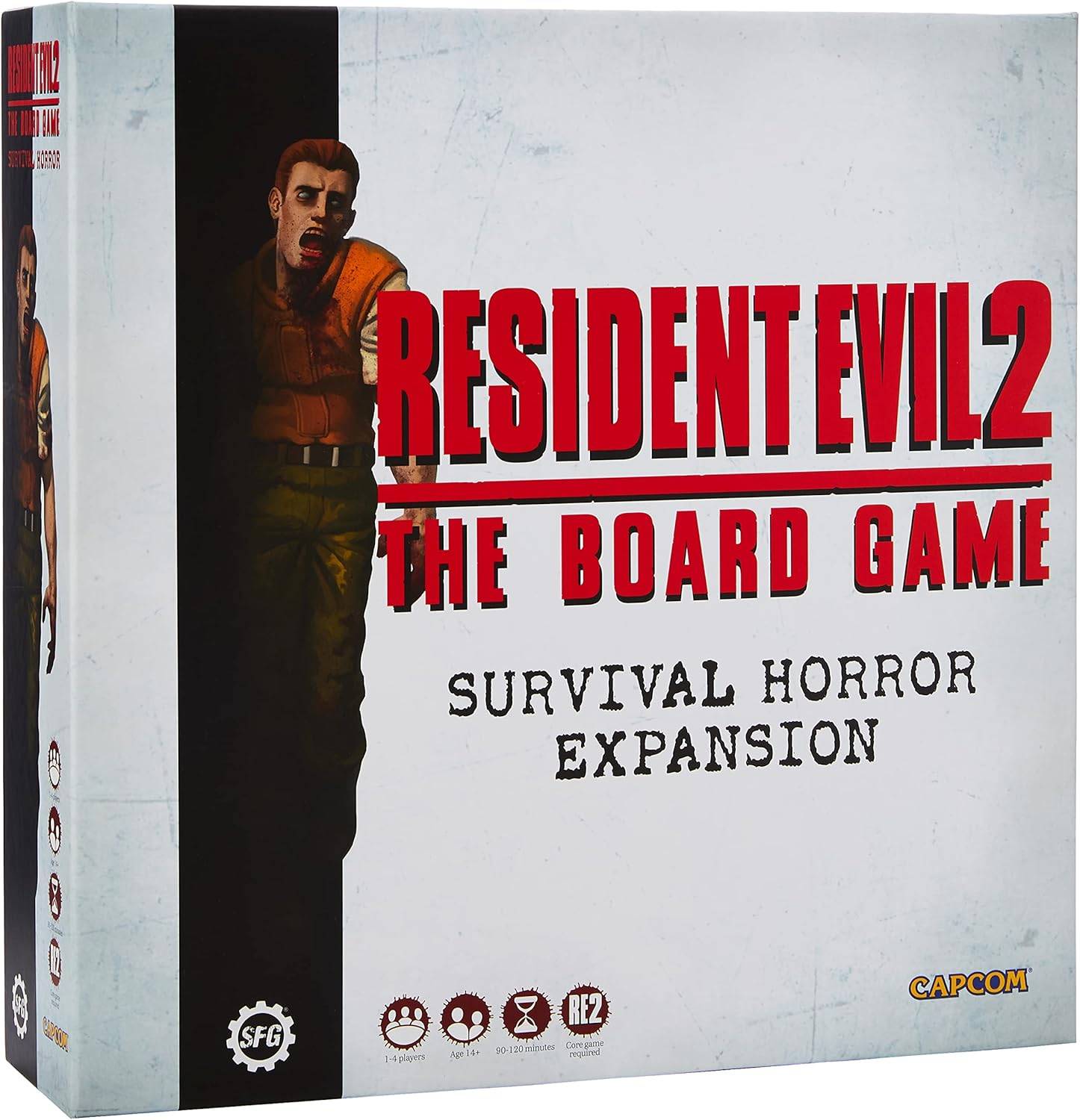 ### Resident Evil 2 The Board Game: Survival Horror Expansion
### Resident Evil 2 The Board Game: Survival Horror Expansion
0See it at Amazon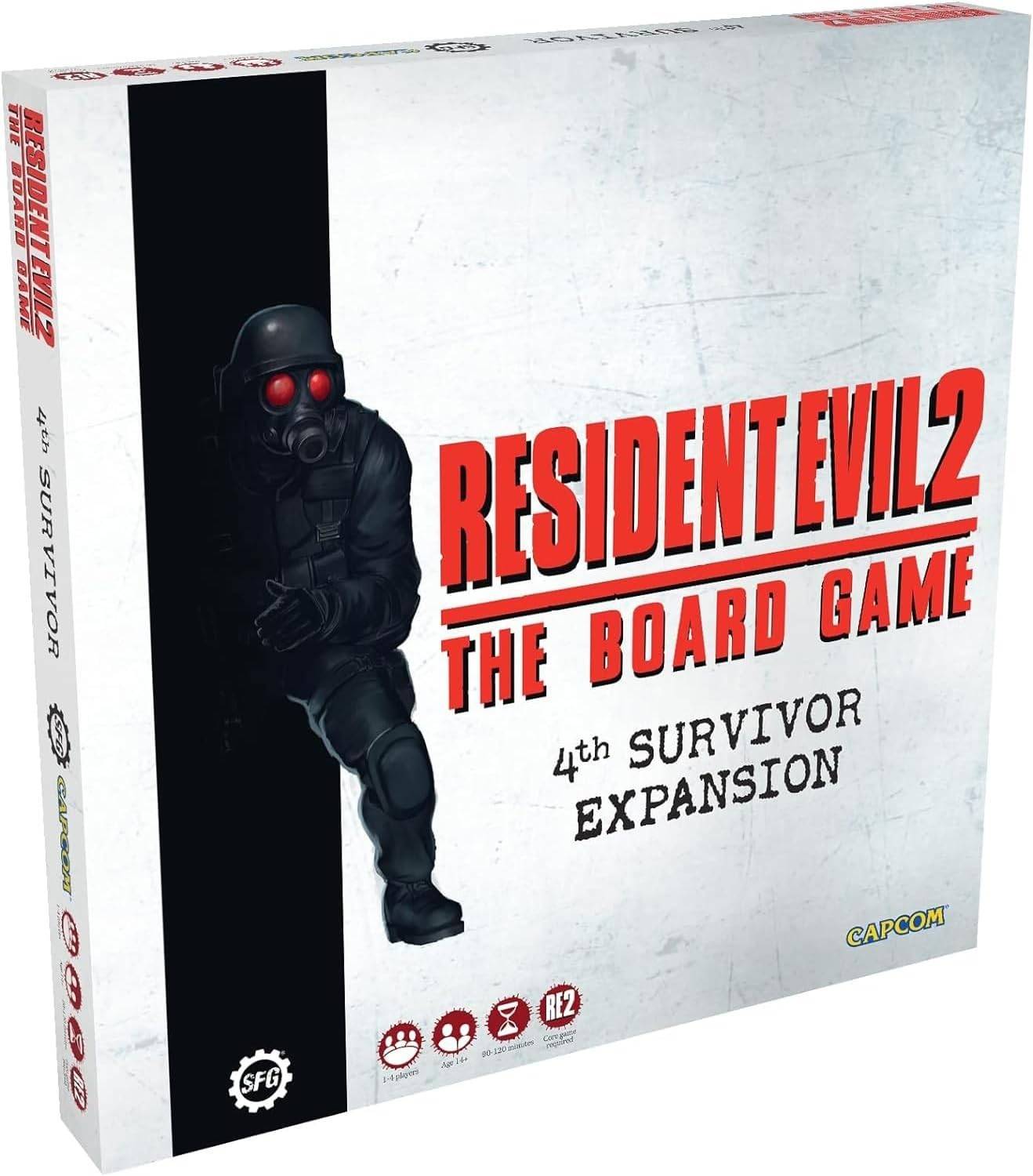 ### Resident Evil 2 The Board Game: - 4th Survivor Expansion
### Resident Evil 2 The Board Game: - 4th Survivor Expansion
0See it at Amazon ### Resident Evil 3: The Board Game
### Resident Evil 3: The Board Game
0See it at Amazon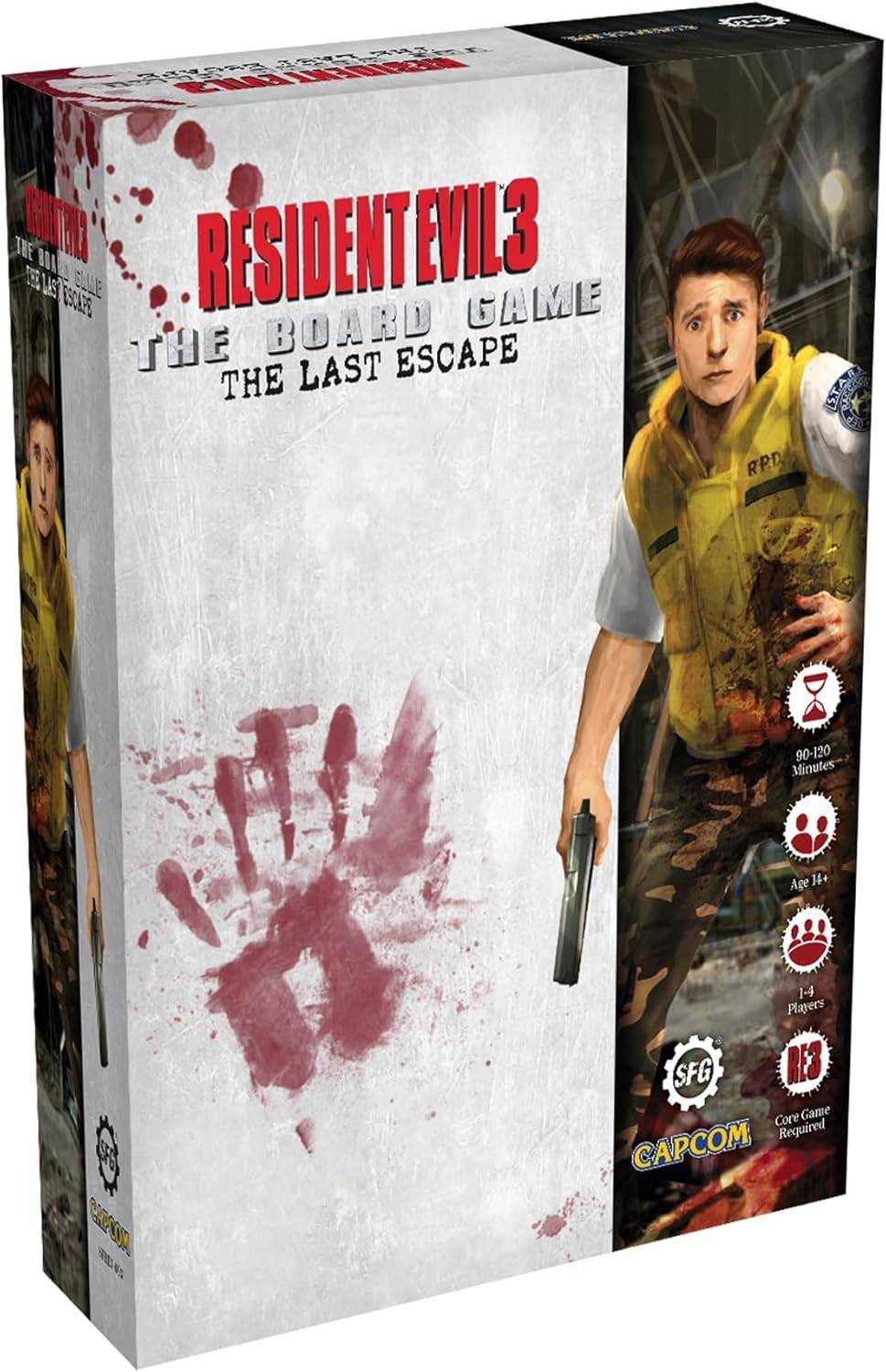 ### Resident Evil 3: The Last Escape Expansion
### Resident Evil 3: The Last Escape Expansion
0See it at Amazon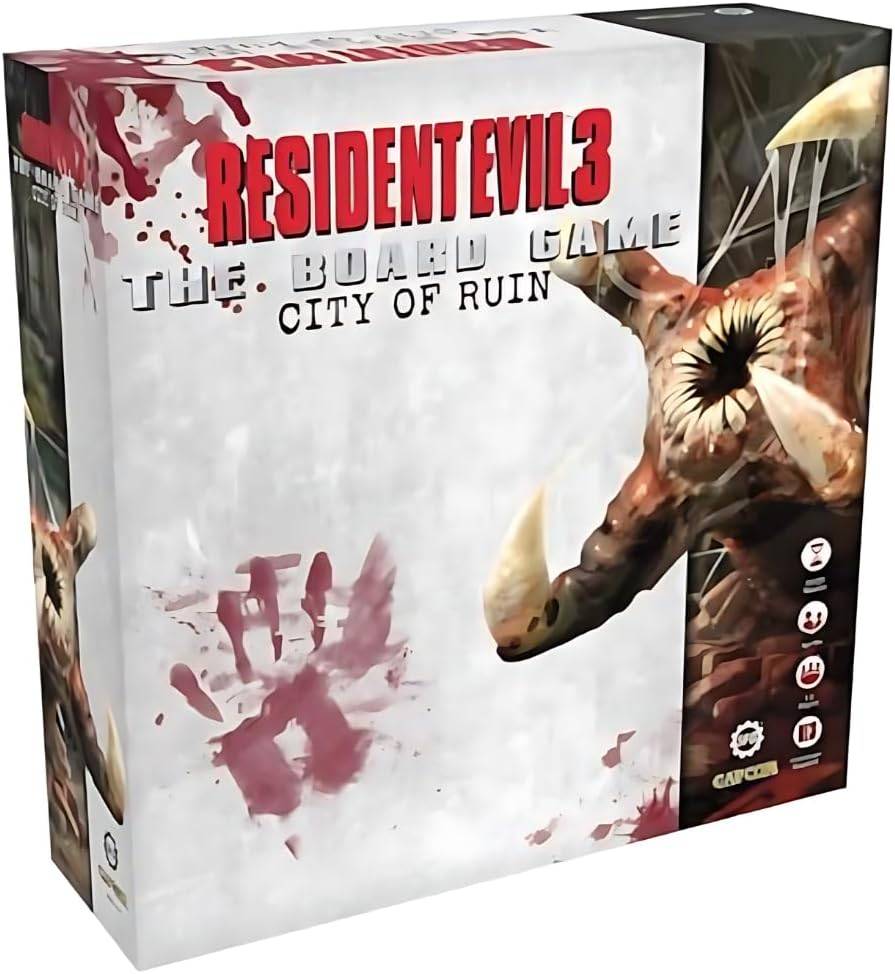 ### Resident Evil 3 The Board Game: City of Ruin Expansion
### Resident Evil 3 The Board Game: City of Ruin Expansion
0See it at Amazon
Gameplay unfolds across three phases: Action, Reaction, and Tension. Players have four actions per turn (move, open/close doors, search, trade, use items, attack). Enemies act during the Reaction phase, potentially attacking or pursuing the active player, who rolls dice to evade. The Tension phase involves drawing from a deck, resulting in positive, negative, or neutral outcomes.
Combat involves dice rolls compared to weapon stats and abilities. Successful attacks might kill enemies, push them back, or miss entirely. Firing weapons alerts nearby enemies (if doors are open), adding strategic depth.
Each game features multiple scenarios playable as standalone experiences or a connected campaign. Levels are built using tiles, with tokens representing doors, items, and other elements. Inventory, health, and other information carry over between scenarios in campaign mode.
Crossover elements exist between games, allowing for character and tile mixing (though not officially supported).
Resident Evil: The Board Game
 ### Resident Evil: The Board Game
### Resident Evil: The Board Game
1See it at Amazon
This refined entry improves upon its predecessors. Players explore the Spencer Mansion and surrounding areas as Jill, Chris, Rebecca, or Barry, alongside support characters (Wesker, Marini, Aiken, Vickers). The game uses cards to build the environment dynamically, unlike the paper maps of RE3. Killed standard zombies remain as corpses, requiring kerosene to burn and prevent their reanimation as stronger Red Zombies.
Resident Evil 2: The Board Game
 ### Resident Evil 2: The Board Game
### Resident Evil 2: The Board Game
0See it at Amazon
This initial entry features Leon, Claire, Ada, or Robert battling Lickers, Zombie Dogs, and Birkin across eight scenarios. While fun, it lacks the refinements of later titles, including darker tiles and some missing components. The scenarios are strictly linear.
Resident Evil 3: The Board Game
 ### Resident Evil 3: The Board Game
### Resident Evil 3: The Board Game
0See it at Amazon
RE3 offers a more open-ended campaign, allowing players to explore Raccoon City in various orders. The Danger Tracker mechanic increases difficulty as the city deteriorates. The Narrative deck adds replayability. The map, however, uses less impressive paper compared to other components.
The expansions for each game add new scenarios, characters, enemies, items, and gameplay modes, significantly extending the replayability of the core games.

 ### Resident Evil: The Board Game
### Resident Evil: The Board Game ### Resident Evil: The Bleak Outpost
### Resident Evil: The Bleak Outpost ### Resident Evil 2: The Board Game
### Resident Evil 2: The Board Game ### Resident Evil 2 The Board Game: B-Files Expansion
### Resident Evil 2 The Board Game: B-Files Expansion ### Resident Evil 2: The Board Game - Malformations of G B-Files Expansion
### Resident Evil 2: The Board Game - Malformations of G B-Files Expansion ### Resident Evil 2 The Board Game: Survival Horror Expansion
### Resident Evil 2 The Board Game: Survival Horror Expansion ### Resident Evil 2 The Board Game: - 4th Survivor Expansion
### Resident Evil 2 The Board Game: - 4th Survivor Expansion ### Resident Evil 3: The Board Game
### Resident Evil 3: The Board Game ### Resident Evil 3: The Last Escape Expansion
### Resident Evil 3: The Last Escape Expansion ### Resident Evil 3 The Board Game: City of Ruin Expansion
### Resident Evil 3 The Board Game: City of Ruin Expansion LATEST ARTICLES
LATEST ARTICLES 


